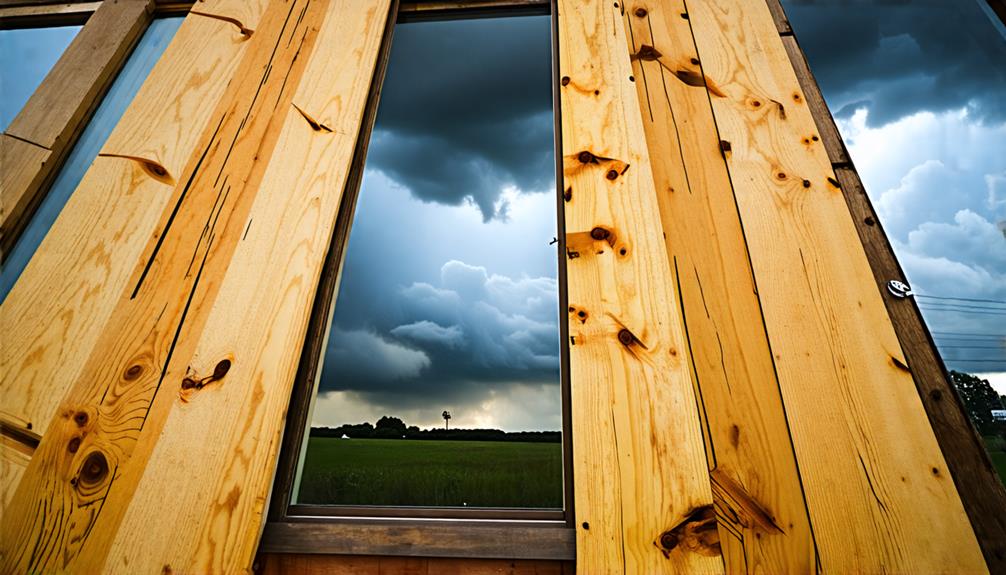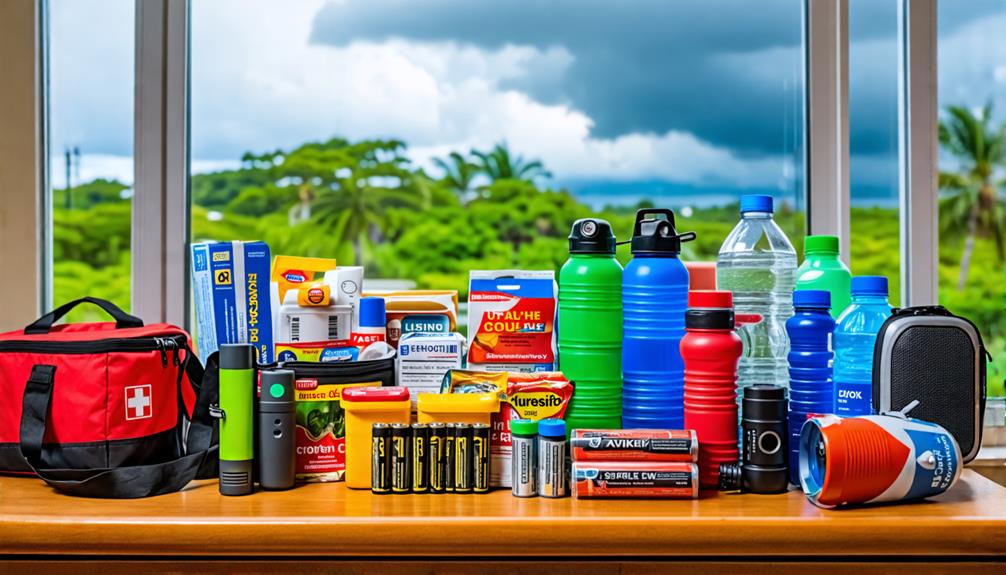To prepare for Tropical Storm Debby, start by evaluating your property for vulnerabilities like roof damage and drainage issues. Secure outdoor items, bringing in furniture that could become projectiles. Reinforce windows and doors with storm shutters or impact-resistant glass. Create a drainage plan to guarantee water flows away from your foundation and maintain your gutters. Finally, stock emergency supplies, including food, water, and first-aid kits for at least three days. By taking these proactive steps, you'll greatly improve your home's resilience against storm damage. There's more to reflect on for ideal preparedness.
Key Takeaways
- Assess your property for vulnerabilities by inspecting the roof, siding, and foundation for damage and ensuring proper drainage systems are in place.
- Secure outdoor items such as furniture and decorations to prevent them from becoming projectiles during high winds.
- Reinforce windows and doors with hurricane shutters and solid core doors to protect against flying debris and wind pressure.
- Develop a drainage plan to direct water away from your foundation, ensuring downspouts are clear and functional.
Assess Your Property

To effectively prevent storm damage, start by thoroughly evaluating your property for vulnerabilities, such as weakened structures and potential hazards. Walk around your premises, inspecting the roof, siding, and foundation for signs of wear. Look for cracks, loose shingles, or any areas that seem to be sagging. These storm vulnerabilities can greatly increase the risk of damage during severe weather.
While evaluating, don't overlook the importance of property maintenance. Regularly trimming trees and clearing gutters can prevent debris from becoming a projectile during a storm. Pay special attention to drainage systems; make sure they're functioning properly to avoid pooling water that could compromise your foundation.
If you find issues, prioritize repairs based on urgency. Addressing minor problems now can prevent costly repairs later. It's additionally wise to consult professionals when necessary; their expertise can provide insights that you might overlook.
Secure Outdoor Items
Securing outdoor items is crucial for minimizing potential damage during storms, as loose furniture and decor can become dangerous projectiles in high winds. Start by evaluating your yard, identifying items that could easily be tossed around. The following table provides a guideline for effective furniture storage and necessary landscaping adjustments:
| Item | Action Required | Alternative Solutions |
|---|---|---|
| Patio Furniture | Move indoors or secure with weight | Use furniture covers |
| Umbrellas | Collapse and store | Anchor with heavy objects |
| Potted Plants | Bring inside or group together | Use plant ties to secure pots |
| Lawn Decorations | Store in a shed or garage | Choose heavier materials |
Taking these steps not only protects your property but also improves your peace of mind. By investing time in securing outdoor items, you're making proactive choices that shield your home from unnecessary damage. Consider how simple adjustments, like relocating potted plants or adjusting landscaping, can greatly impact your storm preparedness. Remember, a little effort now can save you from a lot of stress later.
Reinforce Windows and Doors

After verifying your outdoor items are secured, reinforcing windows and doors becomes a crucial step in protecting your home from storm damage. The goal is to minimize the risk of wind and debris breaching your home's defenses. One effective method is to install hurricane shutters. These shutters provide a robust barrier against flying debris and high winds, safeguarding your windows and potentially saving you from costly repairs.
If you're looking for a more permanent solution, consider upgrading to impact resistant glass. This type of glass is designed to withstand severe impacts, reducing the likelihood of shattering during a storm. Not only does this option improve safety, but it additionally offers added insulation and noise reduction benefits year-round.
When reinforcing doors, verify they're solid core and fit snugly within their frames. Consider installing deadbolts and additional locking mechanisms for extra security. By taking these precautionary measures, you create a resilient shield around your home, offering peace of mind during stormy weather. Remember, your home's safety starts with these crucial reinforcements, so don't overlook this critical step in your storm preparedness plan.
Create a Drainage Plan
Establishing an all-encompassing drainage plan is vital for effectively managing stormwater runoff and preventing flooding around your property. To begin, evaluate your existing drainage systems. Identify any areas where water tends to accumulate, and assess whether your current systems are adequate for heavy rainfall. Consider incorporating additional features like French drains, swales, or rain gardens to improve your rainwater management.
Next, map out the flow of water on your property. Understanding how rainwater moves can help you position drainage solutions strategically. Make sure that downspouts direct water away from your foundation, and consider extending them further into your yard or towards designated drainage areas.
Regular maintenance is key, so schedule time to clean gutters and check for blockages in your drainage systems. This prevents debris build-up, which can lead to overflow during storms.
Lastly, consult with a drainage professional if you're unsure about your plan's effectiveness. They can provide tailored advice based on your specific terrain and soil conditions. By taking these proactive steps, you can greatly reduce the risk of flooding and protect your home from storm damage.
Stock Emergency Supplies

It's vital to stock emergency supplies to guarantee you're prepared for potential storm-related disruptions and hazards. A well-thought-out supply checklist can make all the difference when a tropical storm hits. Start with emergency kits that include necessities like water, non-perishable food, a flashlight, batteries, and a first-aid kit. Aim for at least a three-day supply to make sure you can sustain yourself if services are interrupted.
Don't forget to include important medications and personal hygiene items, as these are often overlooked. Furthermore, consider having a battery-operated radio to stay informed about storm updates and emergency information.
If you have pets, prepare a separate emergency kit for them, including food, water, and any necessary medications. It's wise to gather important documents in a waterproof container, making certain you have access to identification and insurance information should you need to evacuate.
Conclusion
By taking these proactive steps, you can effectively minimize the damage caused by Tropical Storm Debby. While you might think preparing is time-consuming, remember that a little effort now can save you from costly repairs later. Evaluating your property, securing outdoor items, reinforcing windows and doors, creating a drainage plan, and stocking emergency supplies aren't just smart moves—they're crucial for protecting your home and loved ones. Don't wait until it's too late; act now to safeguard your future.
